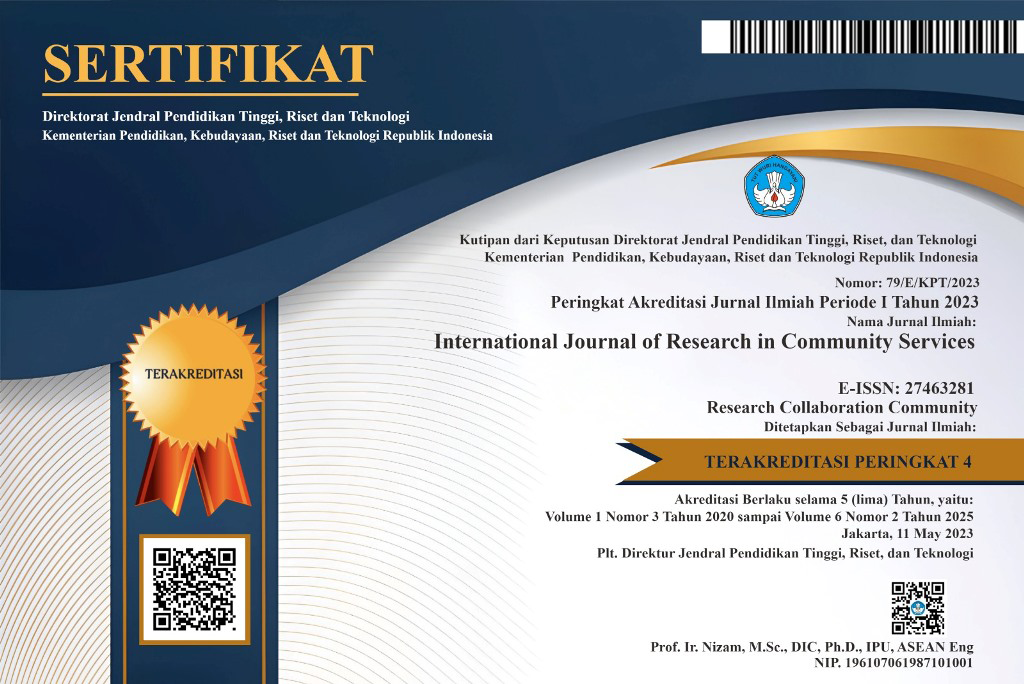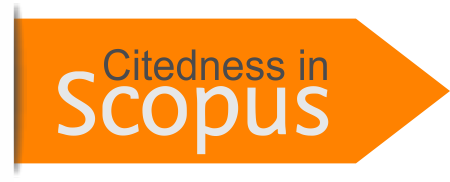Identification of Students’ Comprehension of Radiation Concept Using Rasch Analysis
Abstract
Full Text:
PDFReferences
Ali, M. T., Muhsen, Y. R., Chisab, R. F., & Abed, S. N. (2021). Evaluation study of radio frequency radiation effects from cell phone towers on human health. Radioelectronics and Communications Systems, 64(3), 155-164.
Aminudin, A. H., Kaniawati, I., Suhendi, E., Samsudin, A., Coştu, B., & Adimayuda, R. (2019). Rasch Analysis of Multitier Open-ended Light-Wave Instrument (MOLWI): Developing and Assessing Second-Years Sundanese-Scholars Alternative Conceptions. Journal for the Education of Gifted Young Scientists, 7(3), 607–629. https://doi.org/10.17478/jegys.574524
Darmana, A., Sutiani, A., Nasution, H. A., Ismanisa, I., & Nurhaswinda, N. (2021). Analysis of RASCH model for the validation of chemistry national exam instruments. Jurnal Pendidikan Sains Indonesia (Indonesian Journal of Science Education), 9(3), 329-345.
Gromkowska‐Kępka, K. J., Puścion‐Jakubik, A., Markiewicz‐Żukowska, R., & Socha, K. (2021). The impact of ultraviolet radiation on skin photoaging—review of in vitro studies. Journal of cosmetic dermatology, 20(11), 3427-3431.
Gusmalini, A., & Wulandari, S. (2020, October). Identification of misconceptions and causes of student misconceptions on genetics concept with CRI method. In Journal of Physics: Conference Series (Vol. 1655, No. 1, p. 012053). IOP Publishing.
Hardell, L., Nilsson, M., Koppel, T., & Carlberg, M. (2021). Aspects on the international commission on non-ionizing radiation protection (ICNIRP) 2020 guidelines on radiofrequency radiation. Journal of Cancer Science and Clinical Therapeutics, 5(2), 250-285.
Hu, C., Zuo, H., & Li, Y. (2021). Effects of radiofrequency electromagnetic radiation on neurotransmitters in the brain. Frontiers in public health, 9, 691880.
Muhiddin, N. H., Arif, R. N. H., Ramlawati, R., & Samputri, S. (2024, April). Science misconceptions analysis between factual and conceptual dimensions in junior high school students in Tamalate district of Makassar. In AIP Conference Proceedings (Vol. 2799, No. 1). AIP Publishing.
Rosa, F. O., & Widiawati, T. (2022). Analysis of the Difficulty of Understanding the Concepts of Vibration and Waves of Students Junior High School. International Journal of Research and Review, 9(12), 687-693.
Salvadori, G., Leccese, F., Lista, D., Burattini, C., & Bisegna, F. (2020). Use of smartphone apps to monitor human exposure to solar radiation: Comparison between predicted and measured UV index values. Environmental research, 183, 109274.
Samsudin, A., Suhandi, A., Rusdiana, D., Kaniawati, I., & Coştu, B. (2017). Promoting conceptual understanding on magnetic field concept through interactive conceptual instruction (ICI) with PDEODE∗E tasks. Advanced Science Letters, 23(2), 1205-1209. https://doi.org/10.1166/asl.2017.7539
Samsudin, A., Aminudin, A. H., Fratiwi, N. J., Adimayuda, R., & Faizin, M. N. (2021). Measuring students’ conceptions of light waves: A survey in Central Java. IOP Conference Series: Earth and Environmental Science, 1796(1). https://doi.org/10.1088/1742-6596/1796/1/012124
Seetharaman, R., Tharun, M., Gayathri, S., Mole, S. S., & Anandan, K. (2022). Analysis of specific absorption rate and heat transfer in human head due to mobile phones. Materials Today: Proceedings, 51, 2365-2374.
Shafiq, P., & Mehmood, Y. (2024). Awareness of Radiation Hazards and Knowledge About Radiation Protection Among Medical Students at the Northern Border University, Arar. Cureus, 16(3).
Siedlecki, Sandra L. Understanding descriptive research designs and methods. Clinical Nurse Specialist 34.1 (2020): 8-12.
Sudarti, S., Permatasari, E., Sumardi, S., Muldayani, W., Utoyo, E. B., & Prihatin, W. N. (2023). Extremely Low Frequency Electromagnetic Field Radiation (50 Hz, 200 µT & 300 µT) to Increase Edamame Productivity and Safety Risks to Health. Jurnal Penelitian Pendidikan IPA, 9(8), 5979-5986.
Suprapto, N. (2020). Do we experience misconceptions?: An ontological review of misconceptions in science. Studies in Philosophy of Science and Education, 1(2), 50-55.
Susenas Kor (Badan Pusat Statistik). Proporsi Individu yang Menguasai/Memiliki Telepon Genggam Menurut Kelompok Umur (Persen), 2021-2023. Retrieved July 11, 2024, from https://www.bps.go.id/id/statistics-table/2/MTIyMiMy/proporsi-individu-yang-menguasai-memiliki-telepon-genggam-menurut-kelompok-umur.html
Tukiyo, T., Efendi, M., Solissa, E. M., Yuniwati, I., & Pranajaya, S. A. (2023). The Development of a Two-Tier Diagnostic Test to Detect Student’s Misconceptions In Learning Process. Mudir: Jurnal Manajemen Pendidikan, 5(1), 92-96.
DOI: https://doi.org/10.46336/ijrcs.v5i3.713
Refbacks
- There are currently no refbacks.
Copyright (c) 2024 International Journal of Research in Community Services

This work is licensed under a Creative Commons Attribution 4.0 International License.
Published By:
IJRCS: Jalan Riung Ampuh No. 3, Riung Bandung, Kota Bandung 40295, Jawa Barat, Indonesia
Indexed By:

This work is licensed under a Creative Commons Attribution 4.0 International License.
View My Stats








